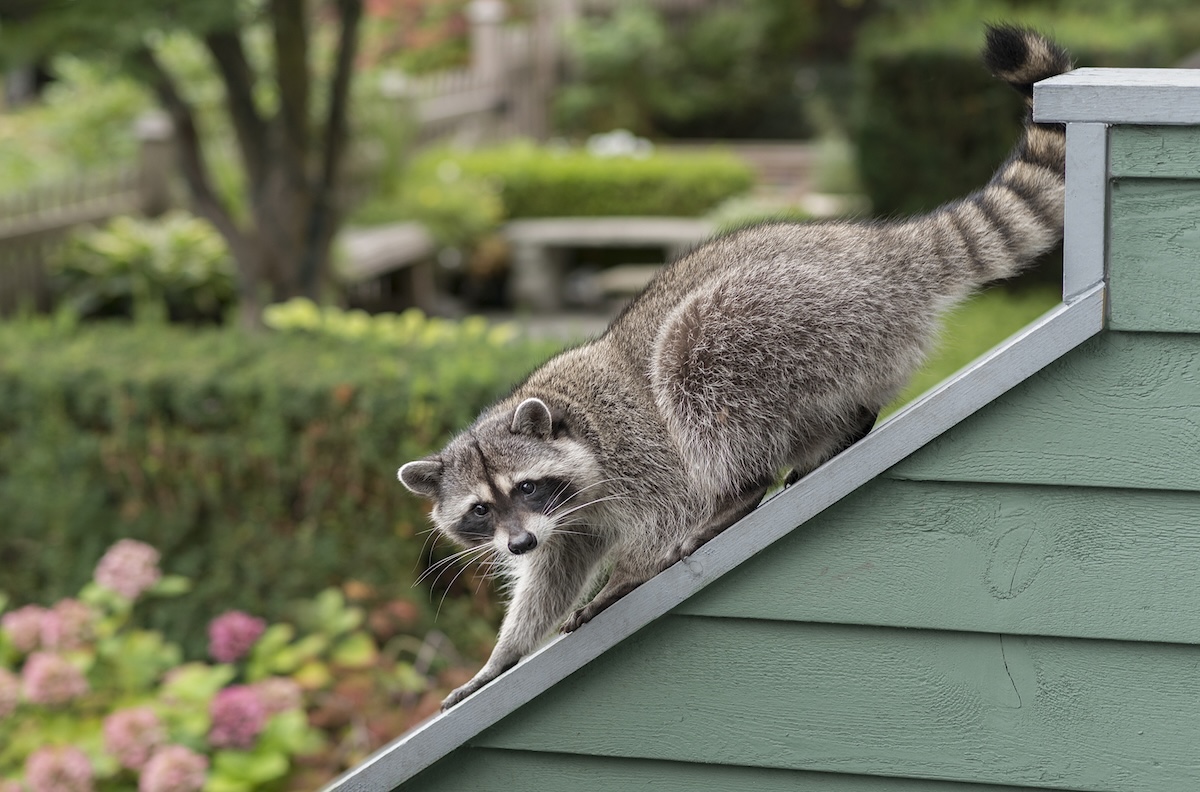

We may earn revenue from the products available on this page and participate in affiliate programs. Learn More ›
Raccoons can be a real bane to your property, tipping over trash cans, raiding your garden for vegetables, and tearing apart landscaping. Left unchecked, they can even infiltrate your home, tearing through drywall and insulation and even taking up residence in your home’s HVAC system.
Fortunately, there are measures you can take to keep these furry invaders off your property and out of your home. Ahead, we’ll cover the telltale signs of raccoon activity, offer time-tested methods for driving them off your property and cover precautions that will ensure they don’t gain access to your house.
How to Tell If There Are Raccoons on Your Property
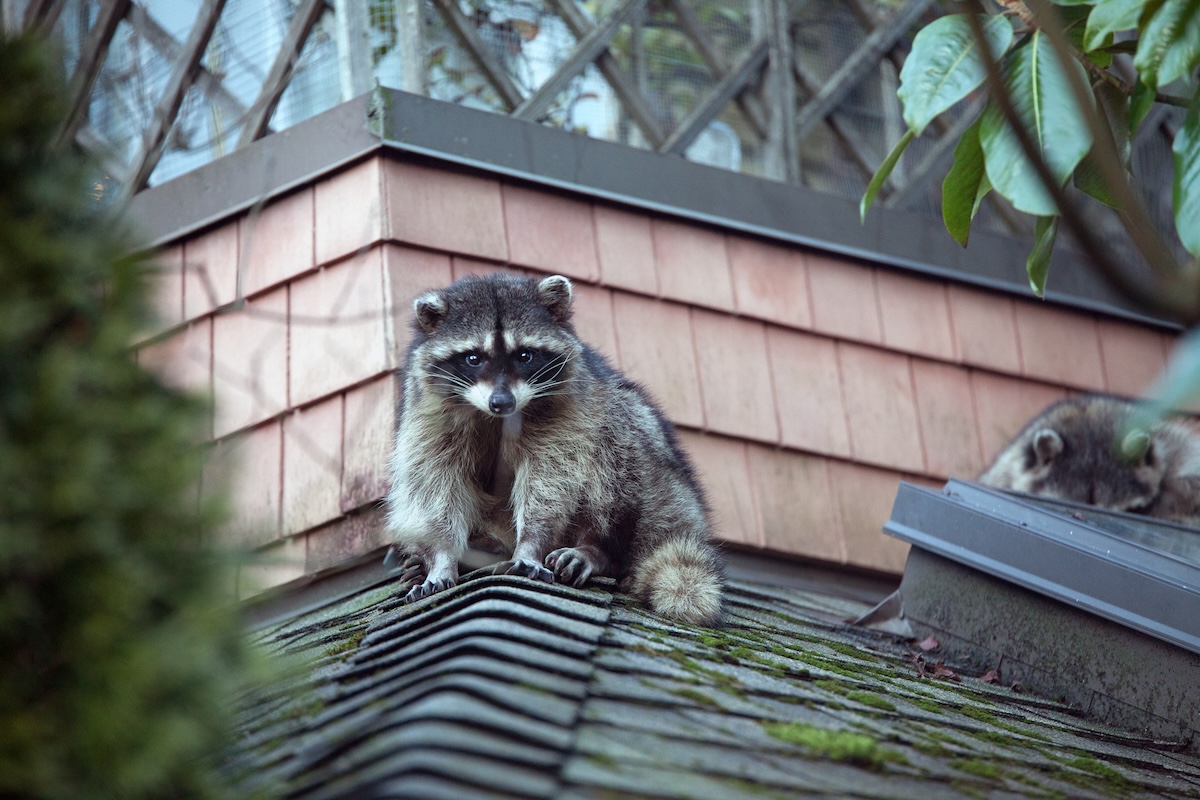
If you’re wondering whether a raccoon has taken up residence on your property, look for these telltale signs:
Tracks: Look for raccoon tracks on porches and driveways. They are about 2 to 3 inches in diameter, have five toes, and look remarkably like small human hands, only with claw marks at the ends of each toe.
Droppings: Raccoon droppings are typically tubular and measure between 2 and 3 inches long. Since raccoons typically designate a defecation spot, you’ll usually find droppings piled in one area.
Damage: The most obvious sign of raccoon activity is the damage they leave in their wake. Common property damage includes overturned trash cans, scattered food scraps, and missing vegetables in the garden. Also look for damage to your home, which can include torn apart insulation, damaged electrical wiring, and scratches on siding, soffits, and roof shingles.
Nests: Raccoons like to shred insulation and use it along with twigs and leaves to create nests. Common nesting spots include crawlspaces and attics.
What is the Fastest Way to Get Rid of a Raccoon?
Before trapping a raccoon, there are a few things to keep in mind. In many cases, raccoons take up residence inside homes to nest with their babies. According to the Humane Society of the United States, raccoon kits are not able to leave the nest for about 10 weeks. To practice humane raccoon removal, don’t separate the mother raccoon from her kits when relocating them.
Non-lethal trapping is the fastest way to get rid of raccoons and is often the best choice if the animals have infiltrated the home. But before deciding on this course of action, verify that you’re following local trapping regulations. Your local branch of the U.S. Fish and Wildlife Department can shed light on any restrictions and may provide the necessary traps. In some regions, this agency even offers raccoon removal services.
After verifying that you can legally trap a raccoon, set up a live animal trap cage with one of the best raccoon baits and check it regularly. Once you’ve trapped the animal, you’ll need to transport the raccoon (and the raccoon babies, if there are any) at least 10 miles away from your property to prevent it from returning.
Keep in mind that trapping any wild animal carries some risk to both you and the animal. If you don’t feel completely comfortable trapping raccoons and relocating them yourself, then consider calling in a wildlife removal specialist to take care of the job.
Humane Ways to Get Rid of Raccoons in Your Yard
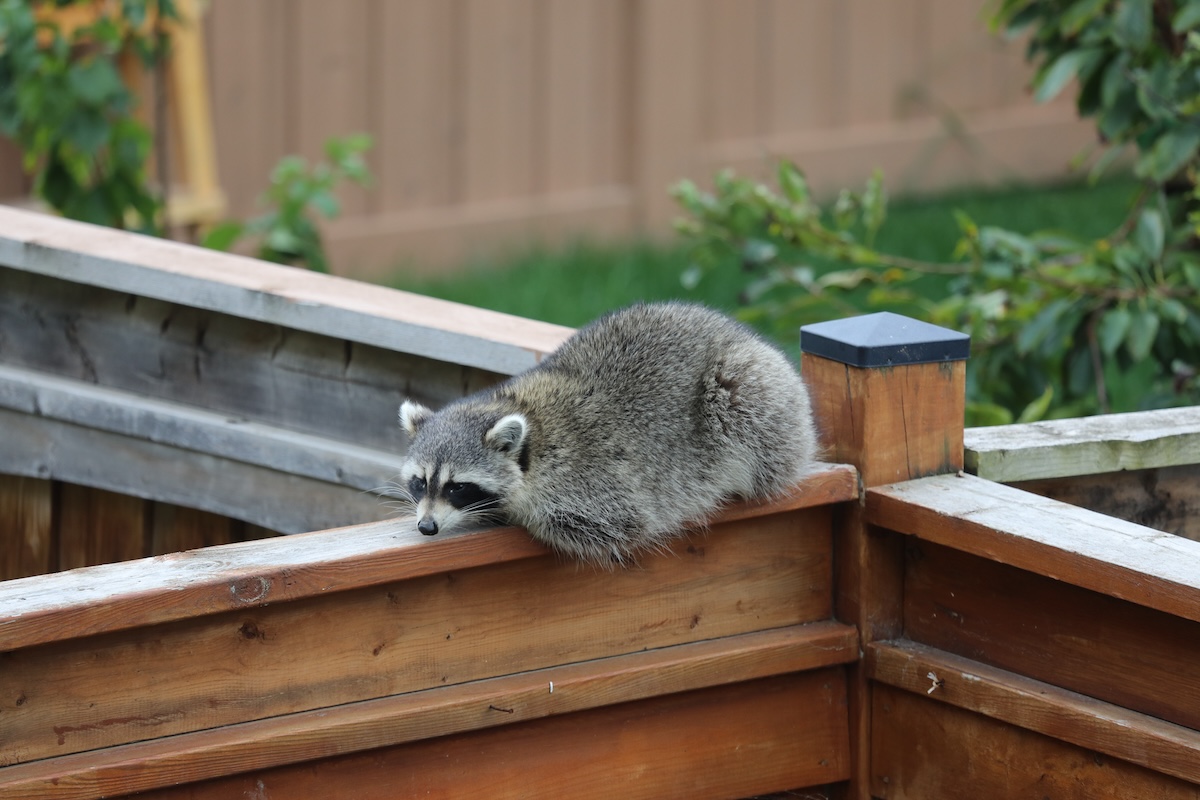
There are several strategies you can employ for driving away raccoons that have made your yard their home or a frequent stop on their nocturnal travels.
Employ harassment methods.
Harassment methods are one of the most humane options for raccoon removal, as they simply involve creating conditions that make a property uninviting. Certain sights and sounds are irritating to raccoons, so incorporating these into the yard may cause them to leave.
- Light. Raccoons enjoy the dark, so a strategically placed flashlight can be a deterrent. Similarly, motion-activated lights surrounding the home can startle raccoons into staying away.
- Water. Placing sprinklers near the suspected raccoon nest and turning them on in the evening can cause raccoons to relocate.
- Sound. Because raccoons are also put off by strange noises, playing a radio near their nest may send them away.
Spray or lay some natural deterrents.
Just like humans, raccoons have aversions to particular smells. Fortunately, some natural raccoon repellents are items you likely already have in your pantry. There are also plenty of raccoon repellent sprays available for purchase.
- Vinegar. Vinegar is a low-cost and nontoxic raccoon deterrent you can use in gardens to keep them from eating plants.
- Plants. Some plants are also repulsive to raccoons—planting plenty of cucumbers near the entrance of the yard or garden may be enough to ward them off.
- Strong flavors. Hot sauce, cayenne, or garlic powder shaken around the perimeter of the yard are all effective raccoon deterrents.
- Ammonia. Raccoons hate the smell of ammonia, so a saucerful of the stuff (or an ammonia-dipped rag) near the creatures’ entry point makes a great homemade raccoon repellent.
- Animal urine. Raccoons have many natural predators, so the urine of these animals is one of the best raccoon repellents you can use. You can purchase coyote, wolf, and other predator urine online or at a local garden store for this purpose.
It’s worth noting that you’ll need to reapply liquid and powder repellents when it rains, so they may not be viable long-term solutions.
Secure trash cans.
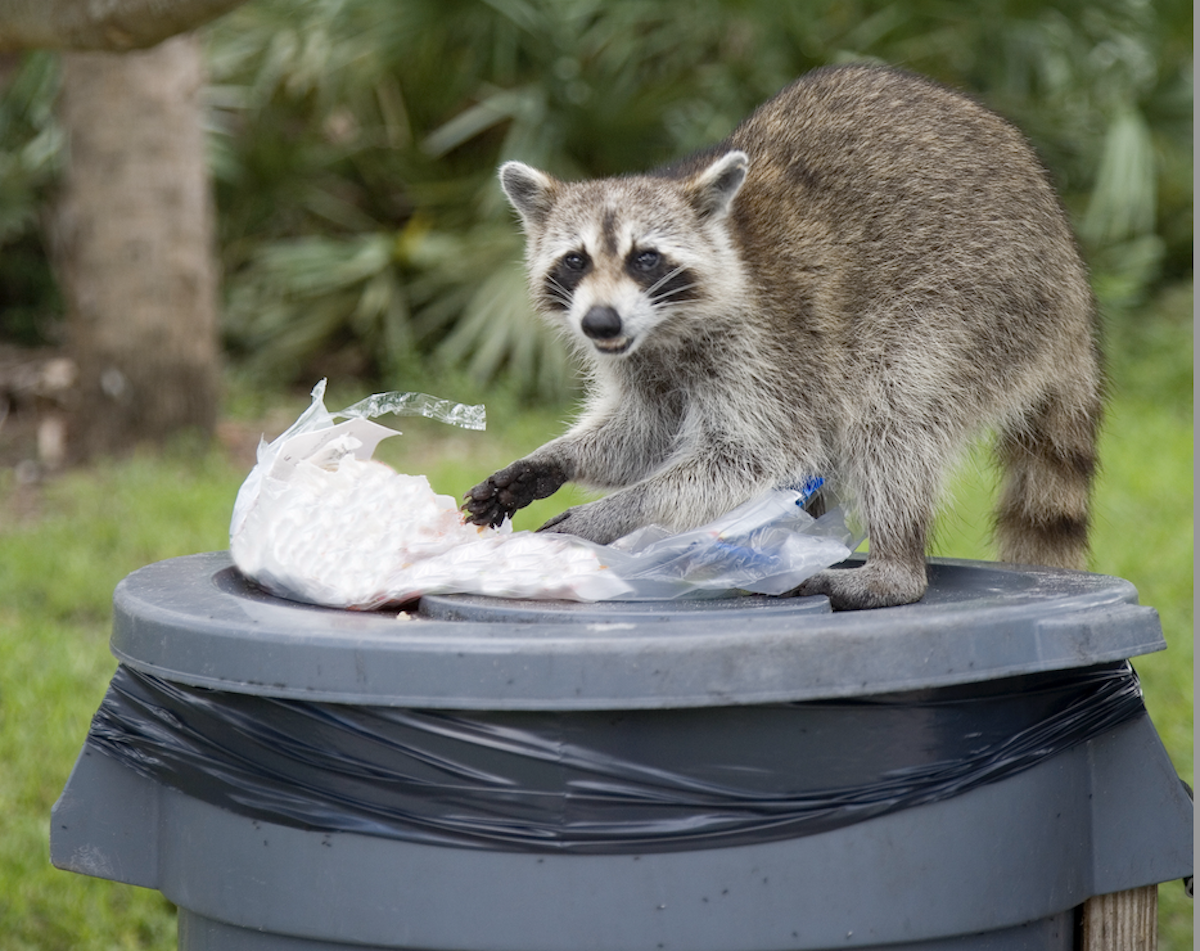
The irresistible odor of trash is often the first thing that attracts raccoons to a yard. Keeping your garbage bins secured will cause raccoons to keep moving in search of more accessible food sources. Bear in mind that raccoons can often work simple locks open with their hands, so make sure your trash securing method is solid.
Bungee cords are a relatively inexpensive way to secure bins, but receptacles with lids that close tightly and lock into place are the best option for keeping out raccoons. Additionally, consider double-bagging any trash that’s going to spend at least one night outdoors before the next scheduled garbage collection date.
Eliminate additional food sources.
Raccoons are scavengers; if they’re hungry, even small morsels of food can lure them to a property. Keep discarded food waste out of sight and contain or mask its odor.
- Any food, even pet food, that’s left outside can attract raccoons. If you feed your pets outdoors, feed them at certain times of day and remove any excess to prevent raccoons from coming over for leftovers.
- When cooking or dining al fresco, take the time to clean up afterward. Hosing and wiping down the picnic or patio table at the end of a meal is a good precaution. For best results, use a cleaner that contains bleach.
- Birdseed is also tempting to raccoons; bringing bird feeders inside at night is likely to keep raccoons from raiding them.
- Some foods, including coffee, chocolate, raisins, and onions, are toxic to raccoons. They can make raccoons sick or act more aggressively, so it’s best to not leave food out.
Maintain your landscaping.
If you’re wondering how to get rid of raccoons naturally, then remove the elements on your property that attract them.
- Remove grubs from the yard. Grubs themselves are a nuisance, so you can eliminate two problems while only paying the cost of pest control once.
- Fruit trees may be another attractant, so cleaning up fallen fruit at the end of each day and disposing of it in a tightly closed garbage can or composter may keep raccoons from sneaking over for a snack at night.
- Cleaning up yard waste and trimming hedges and trees will give raccoons fewer places to hide and less nest-making material.
Ways to Get Rid of Raccoons Inside the Home
The best way to get rid of raccoons inside the home is by preventing them from getting inside in the first place. You can accomplish this by sealing off potential entry points and employing lights and spraying water to make life generally unpleasant for them.
- Seal openings. Raccoons can squeeze their bodies through openings as small as 4 inches in diameter. Install chimney caps and screens over vents and look for any openings in your attic or crawl space that could be large enough to allow a raccoon to gain entry.
- Install motion-activated deterrents. Raccoons like to operate in darkness, so motion-activated lights are an effective means of scaring them away. You can also attach a motion-activated sprinkler that will spray raccoons with water when they approach.
- Trim tree branches. Trim back any tree branches hanging over your roof to prevent raccoons from using trees as a bridge to reach your roof and attic.
- Enclose decks. Install wire mesh fencing around raised decks to prevent raccoons from nesting underneath them.
When to Hire a Professional to Get Rid of Raccoons
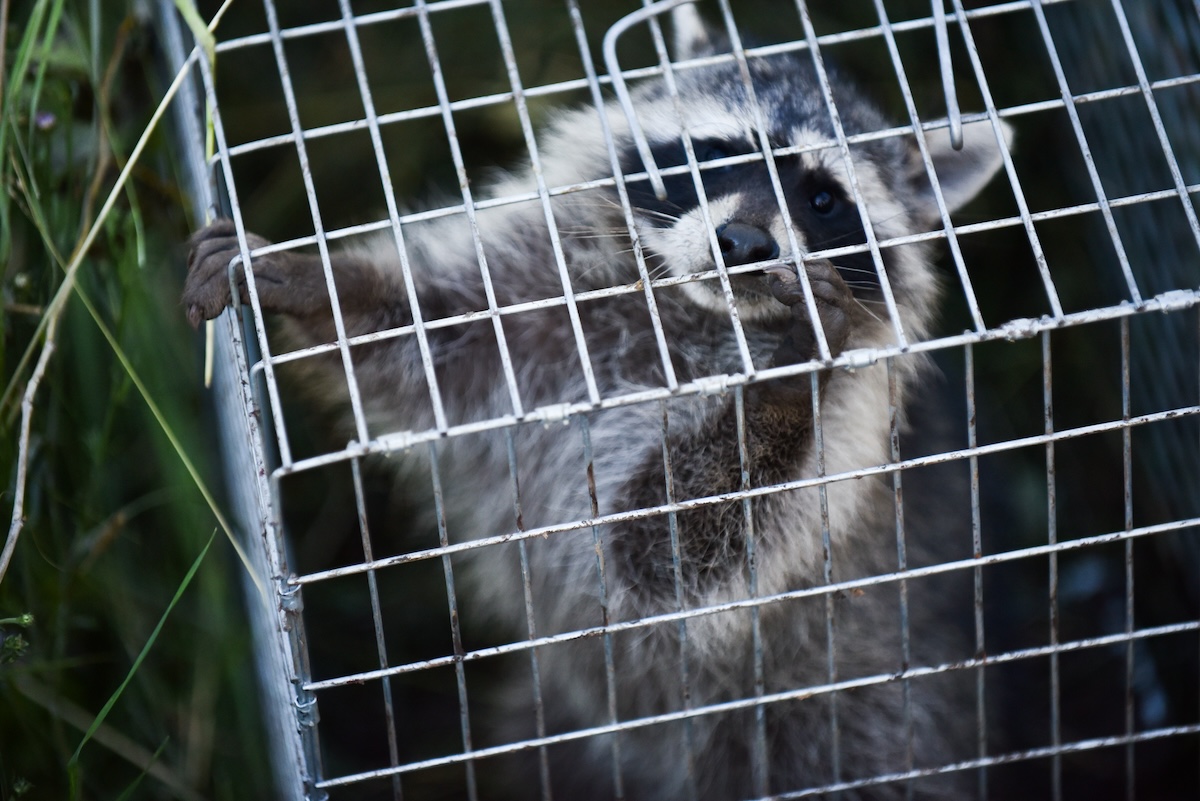
While the above methods can help you get rid of raccoons while avoiding wildlife removal costs, sometimes calling in a professional is the best option.
If a raccoon has established a nest in your home’s attic or crawlspace, attempting to remove it yourself could be difficult and potentially dangerous. Raccoons can become aggressive when cornered or protecting babies.
There’s also the potential the animal could be carrying rabies, which it can pass to humans and pets. For these reasons, it’s often best to have one of the best wildlife removal services take care of raccoon removal.
